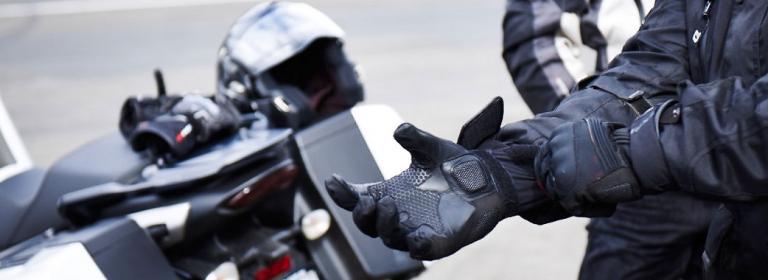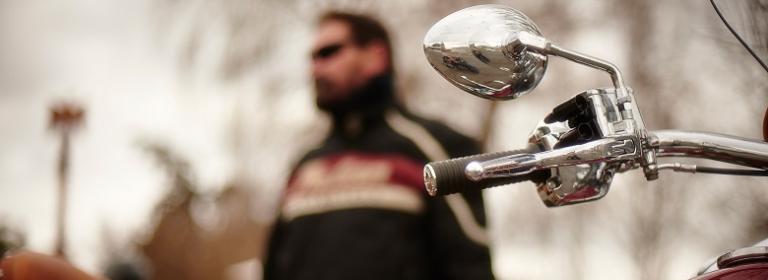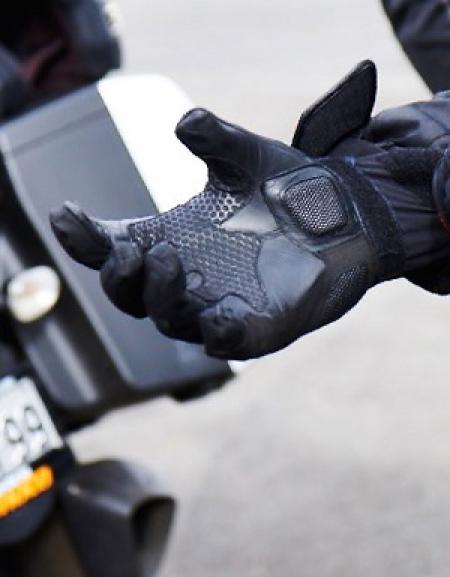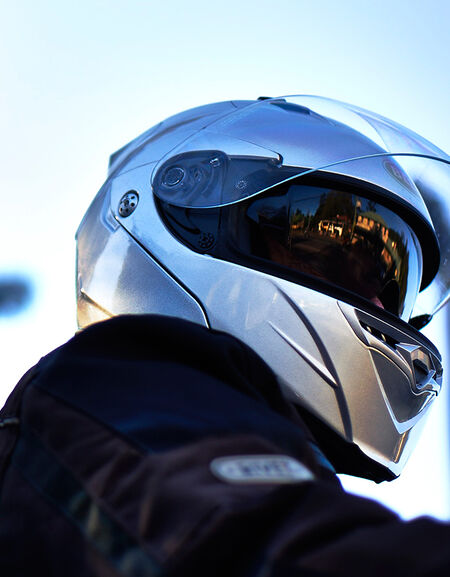
Material
Abrasion-resistant materials help riders avoid cuts, gravel rash and friction burns from contact with the road. They also protect against skin and muscle damage, as well as possible medical complications from infections.
The base of the palm is vulnerable to skin and muscle stripping when it contacts the road surface. Gloves should have multiple layers of protective material over the palm, rather than a single layer. Slider pads on the palm will also increase abrasion protection.
MotoCAP tests clothing materials for abrasion resistance, allowing you to compare the performance of different gloves before purchasing.
Impact protectors
Impact protectors, or body armour, help absorb and spread the impact of a direct blow. They can prevent soft tissue injuries and reduce the severity of fractures and joint damage.
Choose gloves with impact protectors for knuckles and palms, which are likely to strike the ground or be dragged across the surface of the road in a crash.
Impact protectors need to remain securely in place to ensure they can protect you in a crash. Try the gloves on and check that the protectors fit your hands and remain securely positioned.
MotoCAP tests impact protectors for energy absorption and positioning.
Stitching
Seams that split or burst are a common way for motorcycle gear to fail. Concealed stitching is protected from the road surface in a slide, so look for two or three rows of stitching with at least one row concealed. You can feel the inside of the glove to check for the concealed row of stitching.
MotoCAP tests seams for burst strength.
Zips fasteners and decorations
Check that fasteners are on the inside of wrists, which prevent the gloves from being worn off or torn open in a crash.
Make sure that gloves are easy to put on and take off. Have someone try to pull the gloves off your hands after they are securely fastened. If they can be pulled off, they could come off in a crash, leaving you unprotected.
Avoid any unnecessary studs, staples or buckles that could penetrate the protective layer of the glove and injure your hands. Metal studs get hot when sliding across a road and can sear or penetrate your skin.
Comfort
To avoid fatigue and distraction, it is important to ensure that you will remain comfortable for the duration of your ride. Try the gloves on with the clothing you would normally wear while riding. Check that the gloves fit comfortably over your jacket sleeves while in the riding position. Remember that in wet weather you may prefer gloves that fit inside the sleeves.
Check that the gloves fit you well. If they are too tight, they can affect circulation, causing your hands to go numb or cold. If gloves are too big or bulky, they can affect your ability to use the controls on your bike.
Before buying, try on the gloves and make a fist to check that the material doesn’t bunch up or pinch your fingers. If possible, try them on while holding your motorcycle handlebars and check that you can use and feel the controls, clutch and brakes. Check that you can also open and close your helmet visor while wearing them.
Coverage
Riding gear is most effective when your whole body is covered. Gloves should extend about 5cm above the wrist. To maximise protection, cover your whole body with a protective jacket, pants, boots and a helmet as well.
Choose the right gear for your ride
Compare safety and comfort ratings




